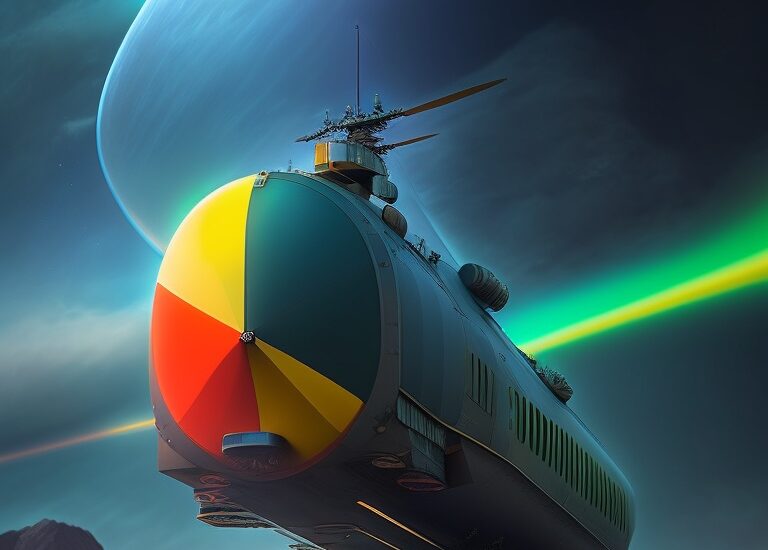In the ever-evolving realm of defense electronics, the year 2025 stands as a pivotal juncture, marked by the convergence of quantum technologies and artificial intelligence (AI). This fusion promises to reshape the landscape of modern warfare, unlocking new dimensions of capabilities and strategic advantages. As we explore the intricate interplay between quantum and AI within defense electronics, a closer examination of real-world examples unveils the profound impact of this synergy on the future of military operations.
- Quantum Encryption’s Impenetrable Shield:
In the world of modern warfare, secure and encrypted communication is of paramount importance. The integration of quantum encryption with AI-driven systems provides an impenetrable shield against cyber threats, safeguarding sensitive information and maintaining operational security. A prime illustration of this concept is China’s Quantum Key Distribution Satellite, a groundbreaking initiative that leverages the principles of quantum mechanics to generate cryptographic keys.
Quantum key distribution (QKD) utilizes the phenomenon of entanglement to create a secure channel for key exchange. AI plays a crucial role in continuously adapting and managing these quantum keys, ensuring that communications between military units remain impervious to hacking attempts. This real-time adaptation enhances the resilience of defense electronics against adversarial actions, enabling military forces to exchange critical information without the fear of interception.
- AI-Powered Predictive Analysis in Electronic Warfare:
Electronic warfare has emerged as a critical battleground, where AI’s predictive capabilities and quantum computing’s processing speed converge to anticipate and counter enemy actions. An illustrative example is the United States Navy’s deployment of the Next Generation Jammer Mid-Band.
This cutting-edge system integrates AI algorithms to swiftly analyze incoming jamming signals, while quantum computing accelerates data processing. The synergy between AI and quantum technology enables real-time adjustments in electronic countermeasures, ensuring that military operations proceed without disruption. By preemptively neutralizing electronic interference, this convergence underscores the pivotal role of quantum-AI synergy in enhancing operational continuity and offering a decisive advantage on the electronic battlefield.
- Quantum Sensors Redefining Stealth and Reconnaissance:
The fusion of quantum technologies and AI-driven sensors is revolutionizing stealth and reconnaissance operations, enabling military forces to gather intelligence without compromising their positions. A compelling example is the Quantum Positioning System developed by the United Kingdom.
This innovative system equips autonomous drones with quantum sensors capable of detecting minute changes in electromagnetic fields. AI processes the data collected by these sensors, facilitating real-time mapping of enemy positions and terrain. Additionally, the AI algorithms predict and adapt to potential threats, ensuring the stealthy execution of reconnaissance missions. By effectively mitigating the risks associated with detection, this quantum-AI synergy offers a distinct advantage in strategic maneuvering and covert operations.
- Swarm Intelligence and Autonomous Combat:
The integration of quantum technologies and AI extends to the realm of autonomous combat, where synchronized and adaptive actions redefine the dynamics of warfare. The DroneSwarm project, initiated by the United States Department of Defense, serves as a compelling example of this transformative synergy.
In this initiative, AI-guided drones with quantum-enhanced processing form a coordinated swarm. These drones share real-time intelligence, collaborate to analyze enemy movements, and adapt strategies based on dynamic battlefield conditions. The quantum-AI synergy empowers these autonomous systems to execute synchronized attacks, showcasing the potential for an agile and effective combat force that reduces the reliance on direct human intervention.
- Quantum Communication Networks for Global Coordination:
Effective communication and coordination are essential components of successful military operations, particularly in multinational coalition scenarios. The integration of quantum technologies and AI-driven network management presents a solution that transcends geographical boundaries. A notable illustration is the European Space Agency’s Quantum Experiments at Space Scale (QUESS) mission.
This initiative establishes quantum communication networks, utilizing the phenomenon of entanglement to achieve instantaneous and secure data transmission. AI plays a pivotal role in managing data routing within these networks, ensuring optimal efficiency and timely decision-making. The resulting quantum communication infrastructure enables swift and coordinated responses within multinational military coalitions, exemplifying the potential of quantum-AI synergy to reshape the dynamics of international collaboration.
The year 2025 marks a transformative era in the evolution of defense electronics, as the convergence of quantum technologies and artificial intelligence reshapes the landscape of modern warfare. The real-world examples presented here underscore the profound impact of this synergy across various domains of defense operations. From quantum encryption fortifying secure communications to AI-powered predictive analysis in electronic warfare, quantum sensors redefining stealth and reconnaissance, swarm intelligence driving autonomous combat, and quantum communication networks facilitating global coordination, the fusion of quantum and AI capabilities promises to unlock unprecedented potential.As nations navigate this dynamic landscape, responsible and strategic integration of quantum-AI synergy becomes imperative. The future of defense electronics in 2025 and beyond will be defined by the extent to which these transformative technologies are harnessed to enhance security, operational effectiveness, and international collaboration in an increasingly complex geopolitical environment.



